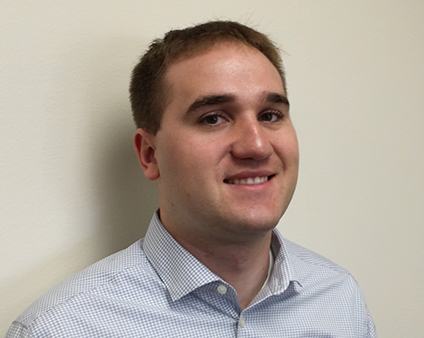Curtis Schroeder | Purdue University
10th July 2018
From the Bowen Lab at Purdue University where he is Graduate Research Assistant, Curtis J. Schroeder shared with us his experience with CIVA software, and how useful it is in his current projects.

You are a graduate research assistant with past hands-on inspection experience. Can you tell us a bit about your current projects on bridge inspections?
I am currently working on NCHRP (National Cooperative Highway Research Program) Project 14-35. Our project team is tasked with evaluating the current acceptance criteria for bridge CJP welds for PAUT weld inspection and recommending proposed modifications to the AWS D1.5 Bridge Welding Code. We are taking the approach that the development of the acceptance criteria should be rational and grounded in fracture mechanics rather than purely workmanship based. Our project involved a fitness-for-service parametric study to develop critical sizes of weld defects. We then utilized CIVA UT to model the critical weld defects in order to recommend scanning procedure requirements and acceptance criteria amplitude limits which will detect and reject these critical defects.
How did you decide that CIVA UT simulation was one of the tools you wanted to work with on your project?
We decided to use CIVA UT simulation since it allowed us to perform a large parametric simulation study quickly and efficiently. We initially performed a round robin testing program to capture information on the variability of inspection results using the current AWS D1.5 conventional UT and PAUT inspection procedures. While this information was very useful to highlight potential modifications to the Bridge Welding Code, we quickly realized that attempting to develop scanning procedures and acceptance criteria purely from experimental testing would be very time consuming and inefficient. It is very difficult in experimental results to separate variations due to human factors from variations due to defect geometry, location, size, etc.
What is your favorite tool in CIVA simulation software?
My favorite tool in CIVA was the ability to quickly locate the probe location which resulted in maximum amplitude and utilize the mode identification tool to aid in understanding how the sound is propagating throughout the part. This has provided a method to evaluate limits on the scan index offset requirements to ensure detection of critical weld defects. CIVA also provides a method to evaluate the effect of variations in material attenuation and velocity due to differences between the calibration block and test object. This has proved very useful to evaluate what calibration requirements may be necessary.
You have attended a CIVA training course. What is your feedback following this class?
I found the CIVA training course to be very useful to first understand how the software works and later to understand how to best apply the various analysis options to ensure that one obtains an adequately accurate but computationally efficient result. The training course includes examples which cover a vast array of ways to apply the software.
Would you recommend CIVA to your colleagues? If so, for which kind of applications?
I would recommend CIVA to colleagues for both research and development of an inspection plan for complex test objects. CIVA is very useful for research and development applications due to the ability to quickly perform inspection simulations and compare results using different inputs. For our project, this was very useful since we are trying to develop a framework for a revised inspection procedure which needs to cover a wide array of applications. I also believe that CIVA would be very useful for development of individual inspection plans for complex test objects due to the ability to simulate the inspection results from defects that would be rejected.
What improvements would you like to see in the coming version?
The main improvement that I would like to see in the coming version would be to add a TCG function to the post-processing tool. While CIVA currently includes a DAC function which is appropriate for evaluation of conventional UT, this function does not provide for simple calibration of each individual focal law, similar to a TCG calibration. I believe this function would be very useful to quickly compare the amplitude of a weld defect to a standard reference reflector at each and every incidence angle as the probe is swept over the weld defect.
